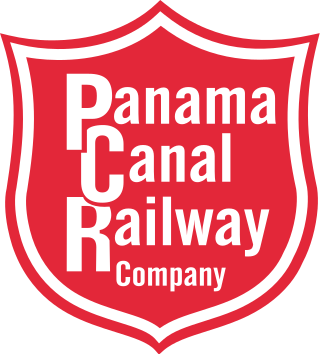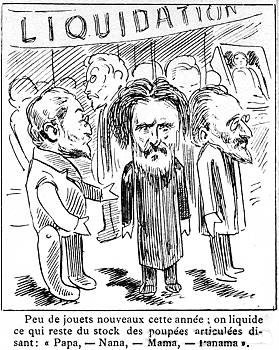
The Nicaraguan Canal and Development Project, informally the Nicaragua Canal was a proposed shipping route through Nicaragua to connect the Caribbean Sea with the Pacific Ocean. Scientists were concerned about the project's environmental impact, as Lake Nicaragua is Central America's key freshwater reservoir while the project's viability was questioned by shipping experts and engineers.

The Panama Canal is an artificial 82-kilometer (51-mile) waterway in Panama that connects the Caribbean Sea with the Pacific Ocean. It cuts across the narrowest point of the Isthmus of Panama, and is a conduit for maritime trade between the Atlantic and Pacific Oceans. Locks at each end lift ships up to Gatun Lake, an artificial fresh water lake 26 meters (85 ft) above sea level, created by damming the Chagres River and Lake Alajuela to reduce the amount of excavation work required for the canal. Locks then lower the ships at the other end. An average of 200 ML (52,000,000 US gal) of fresh water is used in a single passing of a ship. The canal is threatened by low water levels during droughts.

Big stick ideology, big stick diplomacy, big stick philosophy, or big stick policy was a political approach used by the 26th president of the United States, Theodore Roosevelt. The terms are derived from an aphorism which Roosevelt often said: "speak softly and carry a big stick; you will go far". The American press during his time, as well as many modern historians today, used the term "big stick" to describe the foreign policy positions during his administration. Roosevelt described his style of foreign policy as "the exercise of intelligent forethought and of decisive action sufficiently far in advance of any likely crisis". As practiced by Roosevelt, big stick diplomacy had five components. First, it was essential to possess serious military capability that would force the adversary to pay close attention. At the time that meant a world-class navy; Roosevelt never had a large army at his disposal. The other qualities were to act justly toward other nations, never to bluff, to strike only when prepared to strike hard, and to be willing to allow the adversary to save face in defeat.

The Hay–Bunau-Varilla Treaty was a treaty signed on November 18, 1903, by the United States and Panama, which established the Panama Canal Zone and the subsequent construction of the Panama Canal. It was named after its two primary negotiators, Philippe-Jean Bunau-Varilla, the French diplomatic representative of Panama, and United States Secretary of State John Hay.

The Panama Canal Zone, also simply known as the Canal Zone, was a concession of the United States located in the Isthmus of Panama that existed from 1903 to 1979. It consisted of the Panama Canal and an area generally extending five miles (8 km) on each side of the centerline, but excluding Panama City and Colón. Its capital was Balboa.

The Panama Canal Railway is a railway line linking the Atlantic Ocean to the Pacific Ocean in Central America. The route stretches 47.6 miles (76.6 km) across the Isthmus of Panama from Colón (Atlantic) to Balboa. Because of the difficult physical conditions of the route and state of technology, the construction was renowned as an international engineering achievement, one that cost US$8 million and the lives of an estimated 5,000 to 10,000 workers. Opened in 1855, the railway preceded the Panama Canal by half a century; the railway was vital in assisting the construction of the canal in the early 1900s. With the opening of the canal, the railroad's route was changed as a result of the creation of Gatun Lake, which flooded part of the original route. Following World War II, the railroad's importance declined and much of it fell into a state of neglect until 1998, when a project to rebuild the railroad to haul intermodal traffic began; the new railroad opened in 2001.

The Panama scandals was a corruption affair that broke out in the French Third Republic in 1892, linked to a French company's failed attempt at constructing a Panama Canal. Close to half a billion francs were lost and members of the French government had taken bribes to keep quiet about the Panama Canal Company's financial troubles in what is regarded as the largest monetary corruption scandal of the 19th century.
Sullivan & Cromwell LLP is an American multinational law firm headquartered in New York City. Founded in 1879 by Algernon Sydney Sullivan and William Nelson Cromwell, the firm advised on the creation of Edison General Electric and the formation of U.S. Steel, pioneered modern reorganization efforts for insolvent companies, and influenced key financial and regulatory practices.

Philippe-Jean Bunau-Varilla was a French engineer and soldier. With the assistance of American lobbyist and lawyer William Nelson Cromwell, Bunau-Varilla greatly influenced Washington's decision concerning the construction site for the Panama Canal. He also worked closely with President Theodore Roosevelt in the latter's orchestration of the Panamanian Revolution.

The Atrato River is a river of northwestern Colombia. It rises in the slopes of the Western Cordillera and flows almost due north to the Gulf of Urabá, where it forms a large, swampy delta. Its course crosses the Chocó Department, forming that department's border with neighboring Antioquia in two places. Its total length is about 650 km (400 mi), and it is navigable as far as Quibdó, the capital of the department.

William Nelson Cromwell was an American attorney active in promotion of the Panama Canal and other major ventures especially in cooperation with Philippe Bunau-Varilla.
San Juan de Nicaragua, formerly known as San Juan del Norte or Greytown, is a town and municipality in the Río San Juan Department of Nicaragua.

The Accessory Transit Company was a company set up by Cornelius Vanderbilt and others during the California Gold Rush in the 1850s, to transport would-be prospectors from the east coast of the United States to the west coast.
The Bryan–Chamorro Treaty was signed between Nicaragua and the United States on August 5, 1914. It gave the United States full rights over any future canal built through Nicaragua. The Wilson administration changed the treaty by adding a provision similar in language to that of the Platt Amendment, which would have authorized military intervention in Nicaragua. The United States Senate opposed the new provision; in response, it was dropped, and the treaty was formally ratified on June 19, 1916. Eventually, the United States recognized that the canal was unlikely, and at the request of Nicaragua in 1970, the two nations officially abolished the treaty and all its provisions.

The idea of the Panama Canal dates back to 1513, when the Spanish conquistador Vasco Núñez de Balboa first crossed the Isthmus of Panama. European powers soon noticed the possibility to dig a water passage between the Atlantic and Pacific Oceans across this narrow land bridge between North and South America. A number of proposals for a ship canal across Central America were made between the sixteenth and nineteenth centuries, with the chief rival to Panama being a canal through Nicaragua.

Henry Larcom Abbot was a military engineer and career officer in the United States Army. He served in the Union Army during the American Civil War and was appointed brevet brigadier general of volunteers for his contributions in engineering and artillery. In 1866 he received additional brevet appointments as major general of volunteers and brigadier general in the Regular Army. He conducted several scientific studies of the Mississippi River with captain, later Major General Andrew A. Humphreys. After his retirement, Abbot served as a consultant for the locks on the Panama Canal. He was elected a Fellow of the American Academy of Arts and Sciences in 1863.

The First Spooner Act of 1902 was written by a United States senator from Wisconsin, John Coit Spooner, enacted on June 28, 1902, and signed by President Roosevelt the following day. It authorized purchasing the assets of a French syndicate called the Compagnie Nouvelle du Canal de Panama, provided that a treaty could be negotiated with the Republic of Colombia.
Panama is a transcontinental country spanning the southern part of North America and the northern part of South America.

Attempts to build a canal across Nicaragua to connect the Atlantic Ocean with the Pacific Ocean stretch back to the early colonial era. Construction of such a shipping route—using the San Juan River as an access route to Lake Nicaragua—was first proposed then. Napoleon III wrote an article about its feasibility in the middle of the 19th century. The United States abandoned plans to construct a waterway in Nicaragua in the early 20th century after it purchased the French interests in the Panama Canal, which has served as the main connecting route across Central America since its completion.















